Yuri Imamura, Kanda University of International Studies, Chiba, Japan
Imamura, Y. (2018). Adopting and adapting to new language policies in a self-access centre in Japan. Relay Journal, 1(1), 197-208. https://doi.org/10.37237/relay/010120
Download paginated PDF version
*This page reflects the original version of this document. Please see PDF for most recent and updated version.
Abstract
This paper reports on challenges that the new Self-Access Learning Center (SALC) has faced since it moved in to a new building in 2017, and actions taken by learning advisors as SALC managers. Before moving to the new two-storey building, language policies were decided by SALC managers in collaboration with university staff, students, teachers, and administrators. The first floor is a multilingual space and the second floor is an English-only space. However, since we opened the new SALC, although the number of students has increased, it seems that they do not interact with others using their target languages in the space. Thus, by analysing a survey conducted by the SALC team, and also drawing on casual observations, and discussions, learning advisors as SALC managers took actions such as changing the furniture layout, making language policies clearer, and raising awareness of language use in order for learners to increase their engagement in language learning, especially in relation to language policies in the SALC.
Keywords: Self-access, self-access management, language policy
Introduction
Self-access language learning (SALL) has developed in both structured and unstructured learning environments; thus, SALL management has become dramatically variant and complex (Gardner & Miller, 2011). In fact, the Self-Access Learning Center (SALC) where I work, as a learning advisor, has been transforming to meet learners’ needs (e.g. offering learning communities and workshops) and current trends (e.g. developing technology) in education. Learning advisors and administrative managers in the SALC are responsible for managing the centre by interventions to promote usage such as offering events, increasing materials for language learning, and employing and training student staff. This paper describes challenges that the new SALC has faced since it moved to the new building in 2017, and actions that learning advisors as SALC managers have taken in order to increase students’ engagement in language learning, in particular in relation to language policies.
Process of Redesigning Language Policies for the New SALC
The purpose of the SALC I work in was originally to provide a means for learners of English to gain more opportunities to practice English outside of class (Cooker, 2010) and to promote learner autonomy (Gardner & Miller, 1999). Between 2001 and 2016, the SALC offered an English-only space in which learners could immerse themselves in an English environment. This structured learning environment had both positive and negative effects. For example, according to interviews conducted by Gillies in 2007 (Gillies, 2010), the SALC was a motivational space for some students because they could enhance their engagement surrounded by an English-speaking environment that simulated being in a foreign country. However, other students felt anxious and lacked confidence in their English ability, and they chose not to use the SALC. Moreover, worry about joining established communities in the SALC prevented some students from attending. Gillies (2010) concluded that learners’ decisions whether to use a SALC or not seem to be affected by socio-cultural, motivational, and logistical factors. It can be said that these factors also need attention through scaffolding in SALCs, as SALCs tend to be less strictly structured than classes.
Before the move
Prior to the SALC’s 2017 move into a new two-storey building, a survey was conducted in August 2016 to find out what students thought the language policy should be for the new centre. The results are shown in Figure 1.
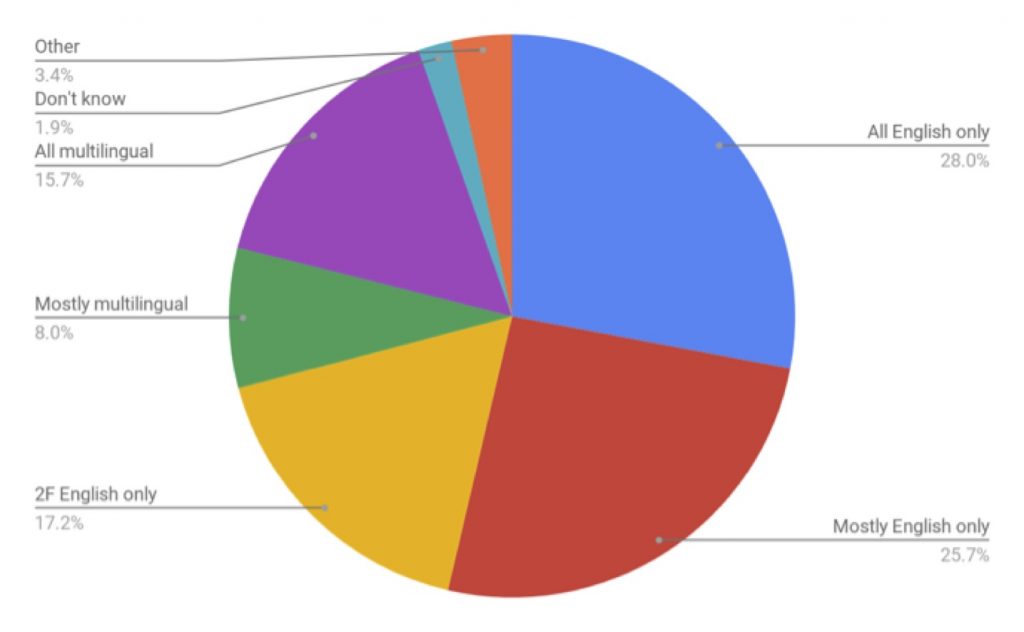
Figure 1. Students’ Preferred Language Policy For The New SALC Based on 2016 Survey Data
Figure 1 shows that about 70% of the participants wanted an English-focused language policy in at least some areas in the new SALC. Additionally, and rather surprisingly, over 50% requested an English-only environment in a majority of areas. While there was wide support for some English-only areas, about 66% of respondents wanted the freedom to use other languages too. The overlap of students that wanted both English-only and multilingual spaces accounts for about 51% of total respondents. Apart from the survey, discussions involving SALC managers, university staff, students, teachers, and administrators were also conducted as part of the decision-making process. As a result, different language policies for each floor were adopted to meet learners’ needs; the first floor is a multilingual space and the second floor is an English-only space (which is the same as in the old SALC).
After the move
After moving to the new SALC in 2017, we saw fewer students practising their target languages in the building. Hence, a survey conducted by the SALC team in order to get students’ input regarding the services and facilities in the SALC, specifically asked about the English-only policy on the second floor. A total of 246 students participated in the survey and 54 of them answered open-ended comments on the English-only policy on the second floor. The question is as follows:
- How strictly should we enforce the English-only policy on the 2nd floor?
The survey results showed that students’ perspectives were categorised as follows: (1) a strict English-only policy—68%, (2) against a strict English-only policy—6%, and (3) support for a more flexible language policy—26%.
Some students in favour of a strict English-only policy commented as follows:
The previous SALC was the only area that we have to use English at this university, and I could switch the language when I stepped into there, and I liked that.
If there is no English-only space, it is impossible to improve English skills.
There should be more than one area where students who want to speak English also talk in English there because here is a foreign language university.
Comments from several students against the strict English-only policy are as follows:
I use the SALC to do my self-study so I do not need the English-only policy. I feel uncomfortable to use the space if there is a strict rule.
The English-only rule is better, but I do not feel like I want to go there if I am forced to speak English.
Students who want to have a flexible language policy commented as follows:
There are people who want to talk with international students in Japanese, so using both English and Japanese is fine to me.
I want to keep the English-only rule, but when my friends talk to me in Japanese, I cannot talk with them in English.
It is difficult to see the validity of the data because participants who commented on the question tend to be more concerned about issues related to the language policies in the SALC and to the English-only policy on the second floor. In a separate study conducted by Davies (2017), the results showed that 80% of 72 student participants who were approached and surveyed by a student staff member expressed support for the current language policy.
It seems that both sets of data support the current language policies; however, language preference policy and actual behaviour in the SALC seem to be different. That is, the two different language policies—a multilingual space on the first floor and an English-only space on the second floor—have not been widely adopted by students in practice. Students who prefer a flexible language policy could go to the first floor and still maintain their language learning, however, it seems that some students identify the second floor as the designated place that they can use or practice English.
Through discussing the survey results and drawing on casual observations, the following two questions arose:
- Does the SALC function as a language learning space?
- Has the SALC encouraged social interactions using English?
Actions Taken So Far
In the first semester of 2017, we observed how students used the SALC and discussed issues that arose since the new SALC was opened among the SALC team. We identified gaps between the current situation and our ideal according to literature in our field, and discussed how we implement in practice. Based on these ongoing discussions, the SALC team has taken the following actions (shown chronologically) to not only promote the language policies, but also to provide a better learning environment:
- Moved furniture
- Expanded communication opportunities in English – ‘The Chat Spot’
- Raised awareness of language use – ‘Show Your Flag’
- Making the language policy clear – ‘Switch Your Brain’
- Background noise
- Furniture move (on the second floor)
As Edlin (2016) pointed out, the layout of furniture is an important factor for learners to feel welcome in SALL environments, especially with regard to increasing comfort and reducing anxiety. When the new SALC opened, the English Lounge with yellow sofas, where most interactions in English occur, were located in one corner on the second floor, which felt quite isolated. In addition, the orientation of the furniture made it somewhat difficult for newcomers to approach others in the area. When teachers and/or students were already engaged in conversation in clustered groups, other students, such as those trying area out, felt somewhat intimidated or thought that it was difficult to approach and join in others’ conversations. This dynamic and thus their anxiety seemed to be due to two factors: (1) the layout of the furniture in that area, and (2) the formation of seemingly closed groups. Research by Burke et al. (2018, this issue) indicated that communities of users developed in the lounge giving the unintentional impression of being a clique. Thus, before the second semester started in 2017, we decided to expand the English Lounge space in order to make the second floor livelier and more open and accessible (see Chen & Mynard, 2018, this issue, for more details about the furniture move and the subsequent student reaction). In contrast, some students also wanted more private space on the same floor; thus, the second floor was intentionally divided into two spaces to enable students to choose their preferred space depending on their needs. More tables were set up nearer the Academic Support Area, where learners could get advice from English teachers on speaking, writing and presentation skills.
- ‘The Chat Spot’ (on the second floor)
The Chat Spot was initiated by one SALC student staff member and one learning advisor to provide more opportunities for students to use English on the second floor, especially when they are seeking someone to use their English with but do not have friends or acquaintances around. Every Monday, the student and the learning advisor position themselves in a specific area so that any student can join in or begin communicating in English (Figure 2).
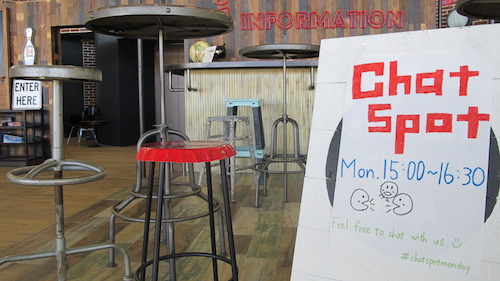
Figure 2. Chat Spot | Photo taken by the SALC Team
- ‘Show Your Flag’ (on the first floor)
The ‘Show Your Flag’ project was also started in order to indirectly make students aware of their language use in the SALC. It also aims to understand more about how they use the space and what languages are spoken or used on the first floor, which is the multilingual learning space. While in the area, students choose two or three flags that match their language use for the day and put them on a whiteboard (Figure 3). Though we need more feedback from users on the flags, it seems from our observation that the majority of students are using the area for completing homework (e.g. working with their friends in Japanese while doing homework in English).
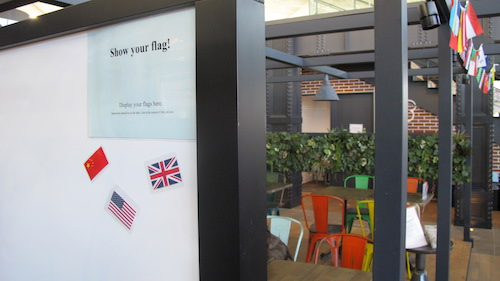
Figure 3. Language Flags | Photo taken by the SALC Team
- ‘Switch Your Brain’ (on the second floor)
A “border” was created by placing a poster near the boundary between the first and second floors as a friendly reminder for students of the English-only policy on the second floor (Figures 4 & 5). In addition, some questions on the steps aim to scaffold students’ English practice on the second floor. The old SALC also had a border in front of the centre to encourage learners to switch their language to English; hence, it may be familiar to students who used the old SALC, and also increase students’ English practice.
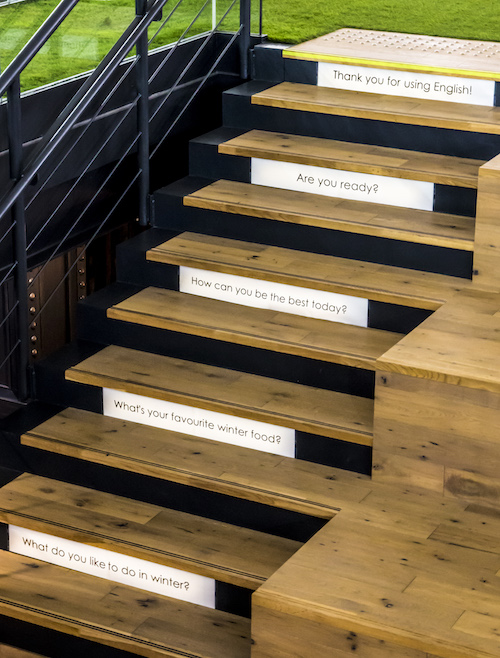
Figure 4. Switch Your Brain | Photo taken by the SALC Team
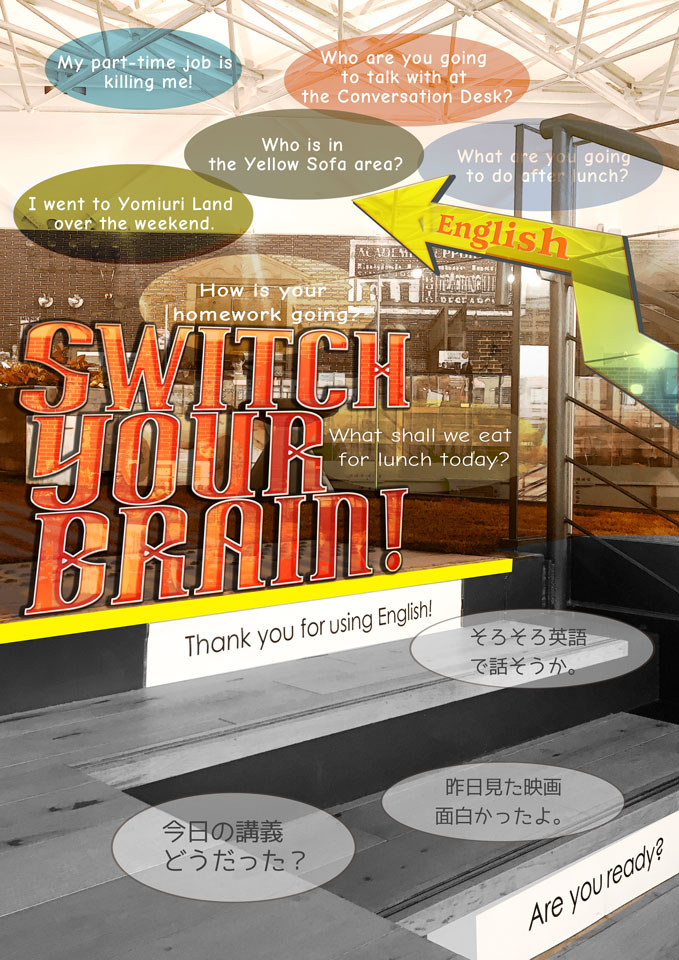
Figure 5. Switch Your Brain Poster | Poster designed by Etsuko Kawashima
- Background noise
Some students requested that background noise be played, such as a TV news channel. They suggested that they can be in ‘language-learning mode’ more often if they are surrounded by English sounds, as the old SALC used to play TV programmes throughout the day.
Both the setting of the border between the multilingual space and the English-only space and providing of background noise are based on initiatives in place at the old SALC. As the new SALC is new not only for freshman students but also for older students of the university, adopting some familiar features may make the SALC more comfortable.
Overcoming challenges
As stated earlier, the above actions were taken to explore the following questions:
- Does the SALC work as a learning space?
- Has the SALC encouraged social interactions using English?
We have actively introduced changes to meet learners’ needs and the purpose of the SALC. However, more improvements are necessary. Some students actually commented on the lack of instructions, in the survey conducted in 2017.
Some commented are as follows:
The rule should be known to all.
I think many students do not know that the second floor is the English-only space.
We have actually have never received an explanation about each area and how we
should behave there.
The SALC has signs in place, such as ‘Please use English here’ and ‘Thank you for using English’, almost everywhere on the second floor, so as to inform users of the English-only policy; yet, it seems that they are not working very well (Figure 6 & 7).
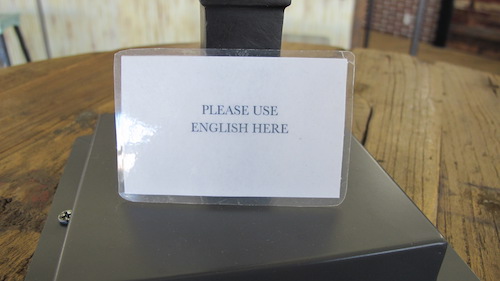
Figure 6. A sign | Photo taken by the SALC Team

Figure 7. A sign | Poster designed by the SALC Team
Perhaps, not only offering SALC orientations to freshman students at the beginning of every school year but also providing older students and exchange students from overseas clearer instructions on how to use the SALC should be required.
Additionally, increasing scaffolding so that students feel comfortable using their target languages on the first floor is also important, assuming we continue to offer the multilingual language policy on the first floor. Having the multilingual space would be beneficial for our students because many of them need to take compulsory second language classes. Practice with more than two languages is likely to increase in near future in the university. The promotion of multilingual practices is widely supported in the literature (Block, 2015; Canagarajah, 2016; Cenoz & Gorter, 2015). Figure 9 depicts the shift from ‘becoming multilingual’ to ‘being multilingual.’
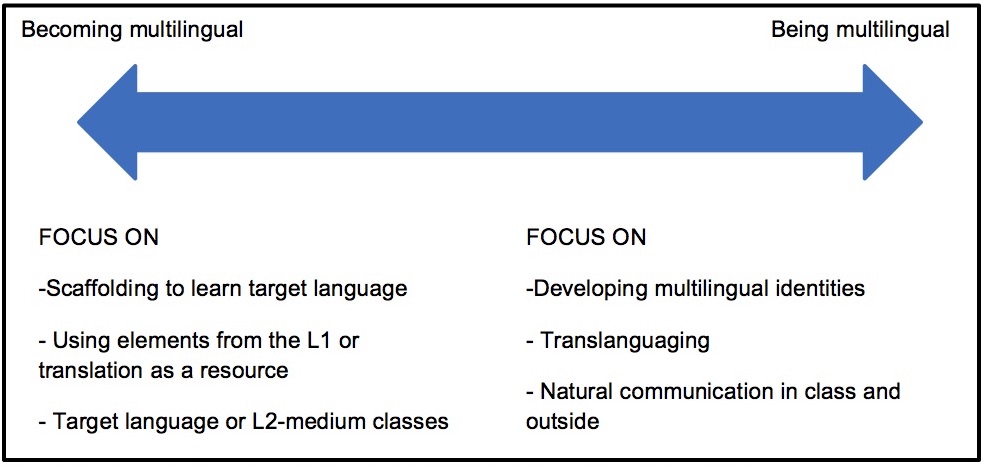
Figure 8. Becoming and Being Multilingual Model (Cenoz & Gorter, 2015)
The ‘becoming multilingual’ model may apply to the current language learning situation on the first floor in the SALC. As this model indicates, the SALC needs to focus more on offering a target language or L2-medium environment as scaffolding, for example, by making spaces for using or practicing their target languages in the multilingual area (the first floor) and observe how they use the spaces.
Conclusion
We as SALC managers have taken actions for dealing with issues that have arisen since the new SALC opened. It is not an easy process to set up new policies, take actions based on the policies, and bridge the gap between what SALC managers plan and what learners understand and how they behave. As the SALC has a significant role to play to foster learners’ socially mediated interactions using their target languages, focusing more on the social learning space is necessary. Managing our language policies affects whether students use the SALC for language learning or not. In order to promote more interactive activities in the SALC, we need to constantly assess our process and progress to pursue our ideal situation, in which students are responsible for regulating their own language use, and decide how to implement our policies.
Notes on the Contributor
Yuri Imamura is a learning advisor in the Self-Access Learning Center at Kanda University of International Studies in Japan. She completed her MA in TEFL at the University of Birmingham, UK. She is currently working on a research project looking into language policies in the SALC.
References
Block, D. (2015). Becoming multilingual and being multilingual: Some thoughts. In J. Cenoz & D. Gorter (Eds), Multilingual education: Between language learning and translanguaging (pp. 226-238). Cambridge, UK: Cambridge University Press.
Burke, M., Hooper, D., Kushida, B., Lyon, P., Mynard, J., Sampson, R., & Taw, P. (2018). Observing a social learning space: A summary of an ethnographic project in progress. Relay Journal, 1(1).
Canagarajah, S. (2016). TESOL as a professional community: A half‐century of pedagogy, research, and theory. TESOL Quarterly, 50(1), 7-41.
Cenoz, J., & Gorter, D. (Eds.). (2015). Multilingual education: Between language learning and translanguaging. Cambridge, UK: Cambridge University Press.
Chen, A., & Mynard, J. (2018). Student perceptions of the English lounge after a layout change. Relay Journal, 1(1).
Cooker, L. (2010). Some self-access principles. Studies in Self-Access Learning Journal, 1(1), 5-9.
Davies, H. (2017). Language policy challenges: Investigation of a learning space in Japan. Unpublished raw data.
Edlin, C. (2016). Informed eclecticism in the design of self-access language learning Environments. Studies in Self-Access Learning Journal, 7(2), 115-135.
Gardner, D., & Miller, L. (1999). Establishing self-access: From theory to practice. UK: Cambridge University Press.
Gardner, D., & Miller, L. (2011). Managing self-access language learning: Principles and practice. System, 39(1), 78-89.
Gillies, H. (2010). Listening to the learner: A qualitative investigation of motivation for embracing or avoiding the use of self-access centres. Studies in Self-Access Learning Journal, 1(3), 189-211.
SALC. (2016). Atarashii SALC e: Gakusei no koe o arawasa seyou [Towards the new SALC: Let’s broadcast students’ voices]. [Survey data]. Chiba, Japan: Self-Access Learning Center.
SALC. (2017). SALC survey July 2017. [Survey data]. Chiba, Japan: Self-Access Learning Center.

Language policies in the SALC are important because they affect how the SALC is set up and run. It is interesting to learn from this paper on how the new SALC was planned and its effect on the new policies. The process of involving students for policy making is great because not only does it cater to learners’ needs, it also enhances learner autonomy, which is one of the philosophies underpinning the establishment of the SALC at Kanda as well as encourages the users to be more engaged.
Since the learning space has widespread, the role of a self-access centre is not very clear. This phenomenon also reveals in this context. And this paper gives interesting solutions to compromise the role of the SALC as a space to provide English language practice and as a learning space for interaction to construct knowledge among users. Throughout the paper, we can see the involvement of users and staff in order to try out new ideas to be responsive to the users’ needs.
We can also learn various ways which the SALC managers used to continuously get feedback from the users. They range from a formal process which is a survey to observation and discussion. Even though many actions happening in the SALC are practical, this papers shows how the staff in the SALC at Kanda have conducted action research whenever the change happened in the SALC. The data from the action research can be used to justify any decision. Managing the SALC based on facts like this would make it more sustainable